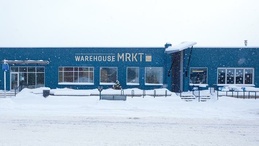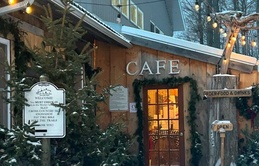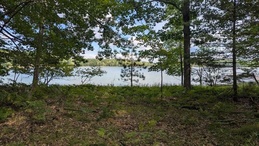The Latest on Global Warming
Jan. 11, 2006
The burning of fossil fuels has two main byproducts: carbon dioxide (CO2) and water vapor. No one knows the effect of water vapor (clouds) on global warming, but the theory was that CO2 is a major contributor. CO2 emissions are the subject of the Kyoto treaty to limit emissions by industrial countries, especially the United States. Current research, however, suggests that basis may be false.For several years the theory has been that increasing CO2 as the result of the burning of fossil fuels is warming up the earth. Turns out that assumption was a computer error. The latest conference in Montreal on climate change concludes that even a 400 percent increase in CO2 emissions will have such a small impact on world temperature that it can hardly be measured accurately. Oops. So what actually is warming up the earth?
Many factors lie behind fluctuating earth temperatures. For one, climate on earth is affected by the activity of the sun. The violent nature of solar activity periodically spews out enormous amounts of energy so strong that even at this distance they create not only solar flares, producing the aurora known as the Northern Lights, but can also disrupt radio and television transmissions, and even cripple space satellites. Periods of low sun spot activity also lie behind cooler weather patterns.
Volcanic activity is also a factor in the weather. When Krakatoa blew up in 1883 the ash and dust thrown up circled the earth, causing cool summers in Europe and crop failures for several years.
Dust can travel great distances in the atmosphere. Yachtsmen sailing west from Africa across the Atlantic several hundred miles from land sometimes become covered with grit from Sahara sand storms. Here in Michigan’s U.P., we have sometimes been under a cloud of smoke from huge forest fires in Canada.
El Niño, that warm spot in the Pacific, also has a periodic pronounced effect on our weather, on the location of fish stocks, and the so-called red tide of poisonous algae.
Pollen, that stuff that may give you hay fever, is distinctive and long-lasting. Scientists who study pollen taken from cores cut deep into ancient peat bogs or from cores cut out of the Greenland ice cap can identify which plants were growing at the time. What grows when and where depends on the climate and can indicate historic climate change. Pollen studies have proved pre-historic fluctuations in climate.
Then there’s the natural wobble of the earth on its axis. Even without the interference of human activity, the earth goes through cycles of warming and cooling. At times the Arctic has supported tropical plants, and at others much of North America was covered by ice.
We can’t control the wobble of the earth or volcanoes, but we can control local climate to some extent. Cities are known to create their own mini-climates because pavement and rooftops absorb heat while chimneys and vehicle exhausts also warm the air. It’s essential for city engineers to leave plenty of green space and plant many trees to help counteract that micro-climactic effect.
Loss of forests, farming, and desertification all affect climate. As the United States has gone from a forested land to one of farm crops, the land has been more reflective and dryer. Overgrazing in Africa has contributed to the continuous spread of the Sahara.
Though auto emissions are usually mentioned in the arguments against more CO2 in the atmosphere, those gasses are released at ground level. No one seems to mention the exhaust from the thousands of jet aircraft which spew huge quantities of CO2 seven miles up where it is a serious form of air pollution.
Taken together, all the natural factors which affect the planet’s climate are far more powerful than the impact of man-made CO2. Are the ice caps melting? Yes. Is the huge influx of cold water likely to flip the gulf stream, bringing on a mini-ice age in northern Europe? Probably. Can we stop it? Not bloody likely.
What we can do is try to prevent Brazil, for instance, from destroying 25% of the Amazon rain forest. Such a deforestration in soil that depends on fallen trees for the next plant generation’s nutrients will turn Brazil into a desert. Countries that have cut their forests have brought on catastrophic landslides and floods. We can reforest the lands, as Israel has done, the only country in the world where there is a net gain of forest. We can make our cities more habitable by increasing green space.
As for the use of fossil fuels, the declining supply is self-limiting. Here in the UP we may shift back to wood when the natural gas supply is gone, but it takes 10 acres of wood lot to supply winter fuel for a single household. That’s a lot of woods. Photographs of Houghton and Hancock in 1900 show bare hills, not a tree in sight.
When I lived in Heidelberg, Germany in 1954, the air was never fully clear because of smoke from the heating and cooking fires. I was caught in the last great London fog in 1962 before smokeless fuels were mandated. About 1,000 people were killed by that fog. London no longer experiences killer fogs. We know from the experience in London, Pittsburgh, and Los Angeles, that there are ways to reduce smog. We humans are confined to a thin layer on the surface of the planet. Though Earth is about 8,000 miles in diameter, we are confined in a layer of breathable air not much thicker than 10,000 feet and our planes circle the earth at seven miles up. We also survive in a narrow temperature range between 30 below zero and 120 above. This is where we live, and our ability to keep that thin layer of air livable is our challenge. We can’t control the sun’s activity or the earth’s wobble, but we can plant life-giving forests and keep the air clean.
It looks like the CO2 theory is as dead as the flat earth myth. Not to worry, however. One conclusion common to many research papers funded by grants goes something like this: “Further study is suggested.” That translates to “We need another grant.” That’s how the research game is played. Just don’t ask for a refund of the CO2 research money.
Visit Harley L. Sachs’ web site
www.hu.mtu.edu/~hlsachs and listen to two stories broadcast on the BBC (broadband high speed recommended!) and read extensive reviews.
Trending

Farm to Glass with Ethanology
When Elk Rapids distillery Ethanology committed to locally-sourced ingredients for their products, it seemed like they&rsquo… Read More >>
MRKT HLDY SHPPNG, aka Warehouse MRKT Holiday Shopping!
Shop the latest from local makers and vendors at the Holiday MRKT Share at Warehouse MRKT in TC, Saturday, Dec. 20, from 10a… Read More >>
Men and Ugly Sweaters
Those two things don’t always go together, but on Dec. 19, you’ll see both out and about in Petoskey and Harbor … Read More >>


